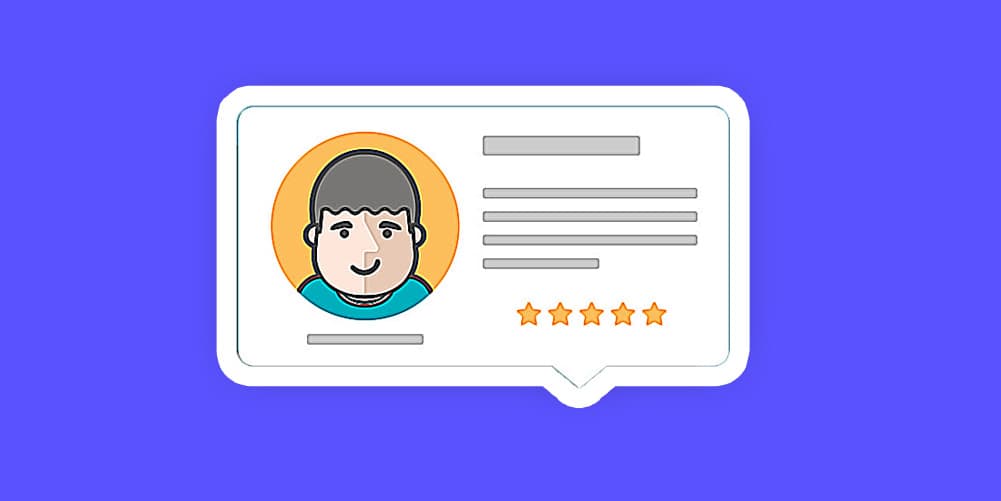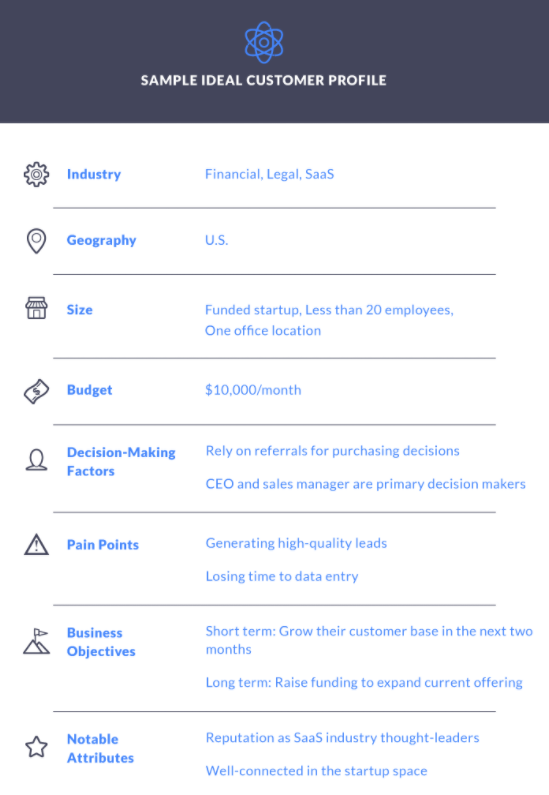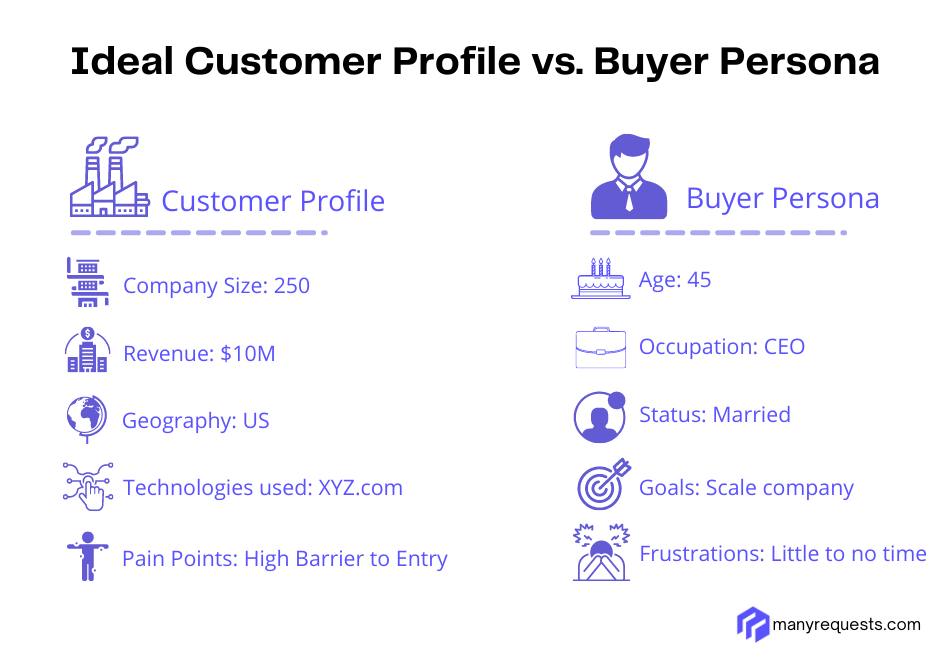
How to Create an Ideal Customer Profile [Template]
If you believe you can sell your product or software to anyone out there, it's time to steer away from that mindset.
Too often, inexperienced entrepreneurs or first-time agency owners have the same broad target audience: "small to mid-size companies", or "people with an interest in [SEO, sales, social media]".
And this might seem fine at first: a broader audience means more sales, right?
In reality, what this causes is a complete lack of understanding and connection with your customers.
If you want to sell, you need to know who you're selling to. Address your audience's problems, needs, and desires.
In this blog post, we'll have a look at the best way to efficiently identify and gather those features, and we'll explore a template for knowing to get your customers better: the customer profile.
What is an ideal customer profile?
An ideal customer profile is a representation of what individual or company your service, product, software, or organization solves for.
In other words—it's a description of who would be a great fit for your product.

A customer profile offers several advantages and benefits:
- Define your solution more clearly. If you're still trying to figure out what it is exactly that your service solves, your customer has the answer.
- Save resources. Better targeting means cheaper ads, higher e-mail open rates, and less time invested in convincing new leads to try out your product.
- Better understand your market potential. Discover new, untapped areas in your industry, and target customers you never thought would use your (or a version of) product or service.
Creating your ideal customer profile should ideally happen before you design your solution, however, it is not a hard requirement.
Ideal customer profile vs. buyer persona
An ideal customer profile is not a buyer persona.
The difference between those two concepts is simple: the customer profile is a hypothetical profile of a target customer account, whereas a buyer persona is more about learning the actual individual(s) itself/themselves.
In practice, a customer profile vs. a buyer persona might look something like this:

So how do you create your ideal customer profile?
Simple: you follow a good template. Let's dive straight in!
Ideal Customer Profile Template
The ideal customer profile template consists of 4 steps, broken into subsections in the form of questions.
Answer those questions to get a better idea of your perfect target audience.
Step 1: External Attributes
- What is the company size?
Knowing the company's size helps you get an idea of your customer's problems and how you should proceed when targeting them.
Example: company X has 250 employees.
2. What is their annual revenue?
Understanding their revenue might help you draft pricing for your services, and make an offer for a reasonable budget.
Example: company Y has a revenue of $10M per year.
3. Where is the company located?
Depending on where the company is located, you may face more barriers when selling your products or services, or incur higher costs.
Example: company Z has offices in both China and the United States.
Step 2: The Problem
- What specific problem are you trying to solve?
What is your customer's problem? Rather than describing the tangible matter, explain how it affects their bottom line.
Example: my customer's website is riddled with translation issues that affect their sales (visitors leave the website / lose trust).
2. How aware is the customer?
Is your ideal customer even aware that they have a problem?
For example, if they've never heard of SEO, are you going to send them an e-mail titled "SEO writing services"? Of course not!
Likewise, even if the customer is problem-aware, they may not know that a solution exists for it.
Example: the customer is familiar with my solution, but their current provider is making a lot of mistakes / has an inferior product.
3. What technologies are they currently using?
Know your competitors. But most importantly, know which competitor your ideal customer is using.
By utilizing this information, you can help your potential clients understand what's the difference between you and their current provider.
Example: the customer uses Lionbridge for all their translation needs, however, this company doesn't offer fast turnarounds.
Step 3: Buyer Personas
- What title does your "contact person" hold?
Are you trying to sell to HR, marketing, sales? Understand what position your buyer persona holds to make it easier to reach them.
Example: my buyer persona is Chief Financial Officer at Company Z.
2. What is their age/gender/education level?
The more personal information about your buyer persona you can gather, the better.
Their background should not be underestimated, at this allows you to decide how to address them, as well as being more personal with them (if adequate).
Example: they are 45, male, and have completed a Bachelors Degree in Business Management.
3. On what channels can you reach them?
This goes without saying: whether they hang out on LinkedIn, Twitter, or lesser-known forums, recognizing where to reach your buyer persona is a big step towards acquiring them as customers.
Example: my buyer persona is active on both LinkedIn and ProductHunt.
Step 4: The Solution
- How does your product, service, or software help?
Something as simple as an elevator pitch is good enough to get started with this section.
What is it that your business really does? Rather than "we sell SEO services", try to put the benefit or value at the center of the solution. If possible, be specific.
Example: we help customers get more organic traffic from Google.
2. What differentiates you from their competitor?
Not overall, but this specific competitor. Why are you better than company ABC at solving problem XYZ?
Example: our translation app automatically detects duplicate segments and instantly updates new translations on your website, whereas company ABC still has to do those updates manually.
3. How does your solution fit into their current goals?
This might be hard to figure out before having several meetings with your ideal customers, but still an excellent attribute to keep in mind.
Example: our project management app includes an auto-scheduler that helps XYZ.com keep on top of its content marketing strategy.
Wrapping up...
We hope you enjoyed learning how to create an ideal customer profile as much as we enjoyed writing this guide.
Use the template to better understand your target market and develop strategies around your customer profiles and buyer personas!
Running an agency?
ManyRequests is an all-in-one client portal and client requests management software.
Learn more